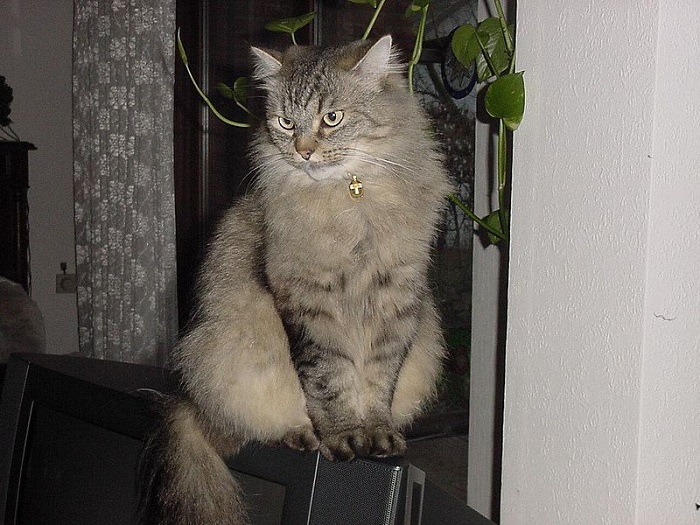With special breeds, the owners often would like to participate in shows. Of course, the question then arises whether the cat has the potential. In addition, many cat owners are interested in the ambitions for cat shows, which criteria belong to the breed standard of their animal. Important for many is also the background. Why is my cat very popular as a breed, or rather a rarity at shows? Answers to these questions, as well as the history of the Siberian cat at shows, you will get here today.
The Siberian cat – breed definition
The Siberian cat is one of the semi-longhaired pedigree cats. Their appearance is described as quite strong. The Siberian cat has only been officially bred since 1987. As it is considered to be very noble and beautiful, it quickly became very popular all over the world. The Russian semi-longhaired domestic cat is considered the ancestor of the Siberian cat.
Their ancestors were not influenced by breeding. Thus, today this particular cat species is considered to be one of the natural breeds. Surprisingly, it is even classified as a forest cat. This makes it a wonderful rarity. Together with the Norwegian Forest Cat and the Maine Coon, the Siberian cat is the group of forest cats. It is usually found all over Russia, as well as in the border areas of the former Soviet Union.
The history of the Siberian cat
In general, everyone should know that the term Siberian cat is basically not a name for a breed. It is generally used for strong cats with a full and long-haired coat. There are many long-haired and short-haired cats in Russia and the former Soviet Union. So, in a conventional litter of domestic cats, it is also possible to find long-haired kittens among them. The reason for this is that the gene of the longhaired cats is inherited recessively. Exactly these “exceptions” in litters are the plot for breeding the Siberian cat.
Today there is still disagreement about where the Siberian cat actually comes from and where exactly its genesis lies. There are several theses here. Nevertheless, this cat species is considered to be one of the most sought-after today. That is why it is often presented at exhibitions. Especially in Western Europe long-haired cats were very rare until the 19th century. That is why many people were already interested in these beautiful animals at that time. They caught their eye on journeys to Russia, for example. Some of the travellers also took the cats home with them. And this is how the history of breeding the Siberian cat began.
The beginnings of breeding Siberian cats
In 1871 Harrison Weir organised the first cat show in the Crystal Palace in London. Here longhair cats are said to have been exhibited, which had their origin in the Russian cat. The foundation for the breeding of pedigree cats is also said to have been laid here. So today it is concluded that also the Siberian cat has its breeding beginning here. At the very beginning, however, there were hardly any long-haired cats, so that many different breeds were mated with each other. Also the Russian longhaired cats can be found in this gene pool. Later, the Persian cats are said to have emerged from here. The best animals of a litter were then used for further breeding. In this way, within a few decades, many different breeds were created and their current standard could be further consolidated.
The breed standard of the Siberian cat
Today the breed standard of the Siberian cat is clearly defined and manifested. Depending on the club membership or the affiliation of the umbrella organisation, the outwardly defined characteristics for the breed standard may differ. In general, the Siberian cat should not show any of the colours Cinnemon and Fawn. Also in this breed the colours Chocolate and Lilac are not permitted. All other colours may be permitted here, as this is the group of forest cats. Even the point variant is possible here. However, this has its own classification and is called Neva Masquarade. The FIFe even lists this variant as a completely independent breed. The standard for this breed is the same as for the classic Siberian cat.
Photo: By Cybercop2000 (Own work) [Public domain], via Wikimedia Commons

